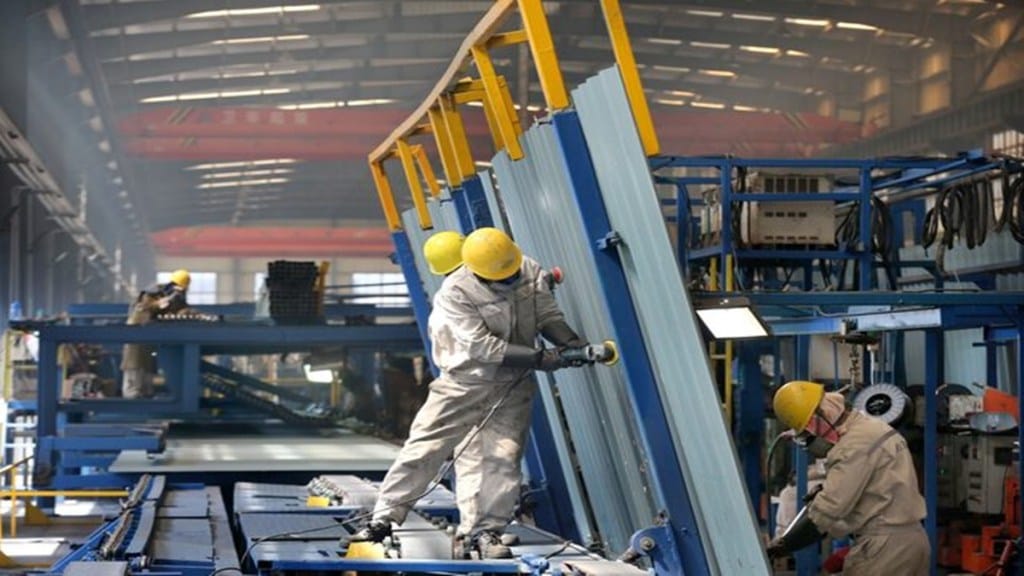India’s factory output, measured by the Index of Industrial Production (IIP), grew 3.1% on year in September, as against (-)0.1% in August, mainly due to an uptick in manufacturing activity, data released by the statistics ministry showed on Tuesday.
The uptick came amidst a series of high-frequency data indicating a slowdown in economic activities, especially a sulp in urban consumption.
Manufacturing growth in September stood at 3.9% as against 1.1% in August, and mining growth stood at 0.2% as compared to (-)4.3%. Electricity growth in September came in at 0.5% as against (-)3.7% a month ago.
On a sequential basis, the IIP grew 0.7% in September, marking the first month-on-month acceleration in activity since May. The uptick in manufacturing activity was driven by acceleration in output of capital-intensive sectors, such as electrical machinery and equipment, transport equipment, and petroleum. But export-oriented sectors of apparel, textiles and leather slowed further in September, indicating sluggish external demand.
Electricity output during September, also higher on year, grew at a modest pace, due to above-normal rains which curtailed power demand. In October and November, the power supply has picked up at a faster rate.
On the use-based level, meanwhile, all six sub-sectors in September saw a rise in growth levels from August. Consumer durables output’s growth rose to 6.5% from 5.3%, and consumer durables to 2% from (-)4.5%. “The improvement in growth of consumer goods output is a positive for consumption demand in the economy,” said India Ratings and Research (Ind-Ra) economists.
According to DK Joshi, chief economist, Crisil, infrastructure and construction related goods picked up as well once rains ebbed. “Industrial activity may rise further in coming months as the festive season boosts consumption demand,” he said.
In the first half of FY25, IIP growth has averaged 4%, lower than 6.2% from the corresponding period of last year, mainly due to unfavourable base effects, and weather related disruptions. The second quarter particularly witnessed a growth of 2.6%, which is the lowest in seven quarters.
In October, an unfavourable base effect is likely to dent the industrial activity print (economists estimate: 2%), but in the remaining months, the overall IIP growth is likely to be higher, as the impact of a healthy monsoon on rural demand will kick in, supporting consumption, say economists.
“Looking forward, we anticipate a notable boost in industrial output from Oct’24 onward, spurred by increased government spending on infrastructure project,” Suman Chowdhury, Chief Economist, Acuite Ratings & Research.
“However, we expect IIP growth to expand at a more tempered pace of around 4.5-5.0% in FY25, down from 5.9% in FY24. This may weigh on overall economic performance,” he said.

